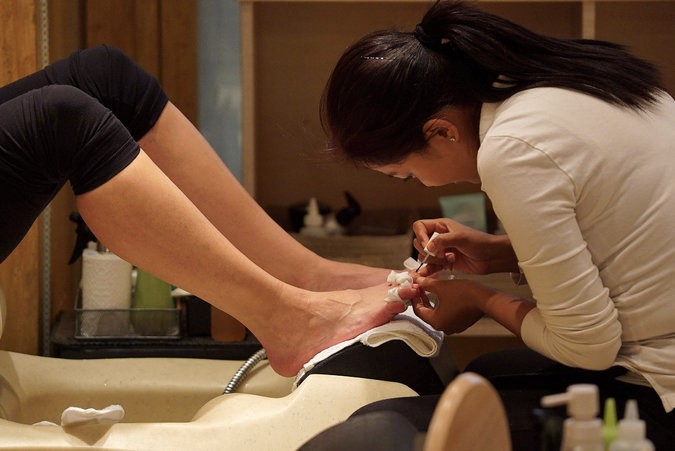By: Sara Kim
Edited By: Sharon E. Chin
Research results by the Department of Toxic Substances Control for the California Environmental Protection Agency have revealed several significant health hazards caused by chemicals used in nail and beauty products. Nail salon workers have the highest risk, as they are exposed to fumes from nail polish lacquer for long periods of time; their exposure to acrylics and other strong chemicals make them notorious for their susceptibility to respiratory and skin problems. These workers commonly show asthma-like symptoms and experience pain when touching cold or hot objects. Also common ailments shared among female nail salon workers include a tendency to have miscarriages or give birth to children with physical and/or cognitive impairments. Some studies even suggest that there are carcinogens in nail products.
Unfortunately, research in the field of nail care products is vague, as not enough studies have been conducted with the accuracy needed to draw firm conclusions. Hence, it is difficult to confidently declare the exact degree to which chemicals in nail products threaten the health of salon workers. Even the federal law that regulates cosmetics safety, written in the Federal Food, Drug, and Cosmetic Act of 1938, is outdated and based on standards appropriated 75 years ago. On top of that, efforts to review these standards have been continuously dismantled by the Personal Care Products Council lobbying the review panel. Although many workplace safety officials agree about the dire situation for nail salon workers, not much action has been taken to actually improve the work environment. In fact, because many of these workers are immigrants who are either unaware of their rights or too scared to stand up for themselves, it makes it easier for employers to engage in unfair labor practices and abuse the workers for their labor.
The question you may ask at this point is: how, then, can I receive nail care ethnically? In “How to get an ethical manicure: a guide to spotting worker exploitation,” Dara Lind lists some things to consider before walking into a nail salon. First, it is important to understand the difference between exploitation and trafficking. Exploitation occurs when the workers are unfairly treated, whether through hazardous working environments or low pay. On the other hand, labor trafficking is defined by workers who are forced into jobs without their consent and do not receive compensation for their work. When such situations are spotted, report for help accordingly, either to your state’s Department of Labor for worker exploitation or to the National Human Trafficking Hotline for trafficking. Lind also suggests straightforwardly asking store owners how they distribute their money, as the owners would gladly share the information if they are not guilty. Lind also suggests understanding that there may be language barriers before making any judgments and promoting businesses you know frequent.
—
Sara (Da Som) Kim is an undergraduate student at the University of California, Berkeley. She is a Social Media Assistant at Cancer InCytes.
—
Reference: Nir, Sarah Maslin. “Perfect Nails, Poisoned Workers.” New York Times. May 8, 2015. URL: http://www.nytimes.com/2015/05/11/nyregion/nail-salon-workers-in-nyc-face-hazardous-chemicals.html?_r=0. Date accessed 5/24/15.
Lind, Dara. “How to get an ethical manicure: a guide to spotting worker exploitation.” Vox Health Care. May 8, 2015. URL: http://www.vox.com/2015/5/8/8573425/manicure-worker-pay. Date accessed 5/24/15.
Photo Credit: Nicole Bengiveno/ The New York Times.
[http://www.nytimes.com/2015/05/12/nyregion/sarah-maslin-nir-times-journalist-answers-readers-questions-on-nail-salons.html]
